NEW
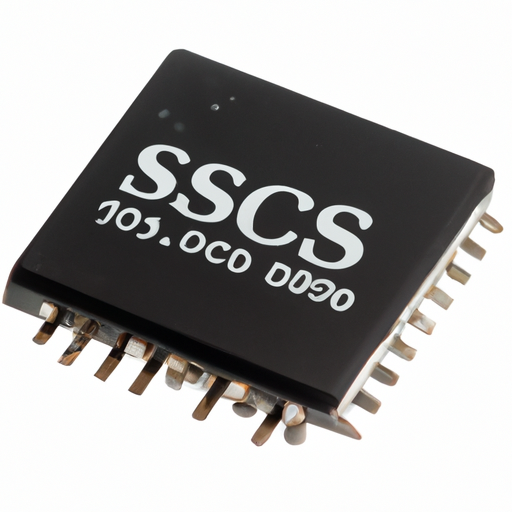
Overview of DIACs and SIDACsDIACs (Diodes for Alternating Current) and SIDACs (Silicon Diodes for Alternating Current) are crucial semiconductor devices in power electronics, known for their ability to control and manage AC signals. Their unique characteristics make them suitable for various applications, particularly in dimming, motor control, and protection circuits.
Core Functional Technology 1. DIAC (Diode for Alternating Current)
- **Functionality**: A DIAC is a bidirectional device that remains in a non-conducting state until the applied voltage exceeds a specific breakover voltage. Once triggered, it conducts current in both directions until the current falls below a certain threshold.
- **Key Characteristics**:
- **Breakover Voltage**: The voltage at which the DIAC switches from off to on.
- **Symmetrical Operation**: Functions identically in both positive and negative halves of the AC cycle.
- **Applications**: Primarily used in phase control applications, such as:
- Light dimmers
- Motor speed controllers
- Triggering circuits for TRIACs 2. SIDAC (Silicon Diode for Alternating Current)
- **Functionality**: Similar to a DIAC, a SIDAC is designed for higher power applications. It also features a breakover voltage and can conduct in both directions.
- **Key Characteristics**:
- **Higher Power Handling**: Capable of managing larger currents and voltages compared to DIACs.
- **Fast Switching**: Provides quick response to voltage changes, making it suitable for protective applications.
- **Applications**: Commonly used in:
- Over-voltage protection circuits
- Snubber circuits
- Triggering devices for SCRs Application Development Cases 1. Light Dimming Circuits
- **Description**: DIACs are integral to light dimmers, allowing users to adjust the brightness of incandescent lamps by controlling the phase angle of the AC waveform.
- **Effectiveness**: This application provides smooth dimming without flickering, enhancing user experience and energy efficiency. 2. Motor Speed Control
- **Description**: In fan speed controllers, DIACs regulate the speed of AC motors by adjusting the phase angle of the AC supply.
- **Effectiveness**: This precise control leads to energy savings and improved performance in HVAC systems, allowing for tailored operation based on user needs. 3. Over-Voltage Protection
- **Description**: SIDACs are utilized in surge protection devices to clamp voltage spikes, safeguarding sensitive electronic components from damage.
- **Effectiveness**: Their rapid response to over-voltage conditions ensures equipment reliability and longevity, making them essential in protecting critical systems. 4. Triggering SCRs in Phase Control
- **Description**: SIDACs serve as reliable trigger devices for SCRs in applications like light dimmers and motor controllers, initiating conduction at the desired phase angle.
- **Effectiveness**: This capability allows for efficient power management, optimizing energy use while maintaining performance. 5. Snubber Circuits
- **Description**: SIDACs are employed in snubber circuits to protect power electronic devices from voltage transients, absorbing energy from inductive loads.
- **Effectiveness**: Their robustness in high-stress environments ensures the reliability of power electronic systems, preventing damage to switches and other components. ConclusionDIACs and SIDACs are vital components in modern electronic systems, particularly in AC power control and protection applications. Their ability to handle varying voltage and current levels makes them versatile and effective across a wide range of applications, from consumer electronics to industrial systems. Understanding their core functionalities and practical applications can lead to more efficient designs and improved performance in electronic circuits, ultimately enhancing the reliability and efficiency of power management solutions.
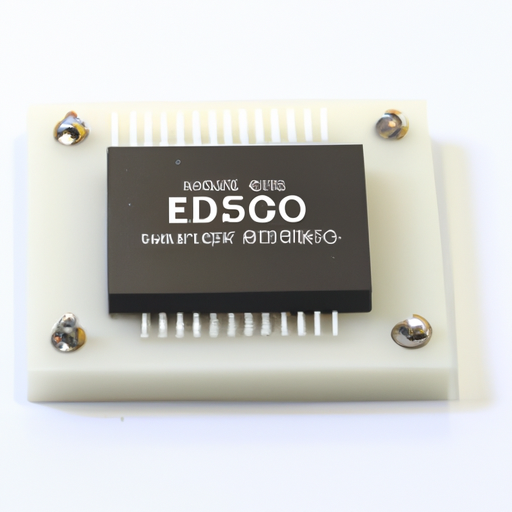
Overview of Crystal, Oscillator, and Resonator AccessoriesCrystal oscillators and resonators are fundamental components in electronic circuits, providing stable frequency references essential for timing and synchronization. The CFR-50JB-52-1R8 is a specific model of crystal oscillator that exemplifies the advanced technology used in these components. This article explores the core functional technologies, applications, and development cases related to crystal oscillators and resonators.
Core Functional Technologies1. Frequency Stability 2. Low Phase Noise 3. Temperature Compensation 4. Miniaturization 5. Power Efficiency 1. Telecommunications2. Consumer Electronics3. Automotive4. Industrial Automation5. Medical Devices1. Telecom Infrastructure2. Wearable Technology3. Automotive Navigation Systems4. Industrial IoT Solutions Applications Development Cases ConclusionCrystal oscillators and resonators, such as the CFR-50JB-52-1R8, are integral to a wide range of applications across various industries. Their core technologies, including frequency stability, low phase noise, and power efficiency, make them indispensable in modern electronic devices. As technology continues to evolve, the demand for high-performance crystal oscillators will only increase, driving further innovation and application development in this critical field. The ongoing advancements in this area promise to enhance the functionality and reliability of electronic systems, paving the way for new applications and improved user experiences.
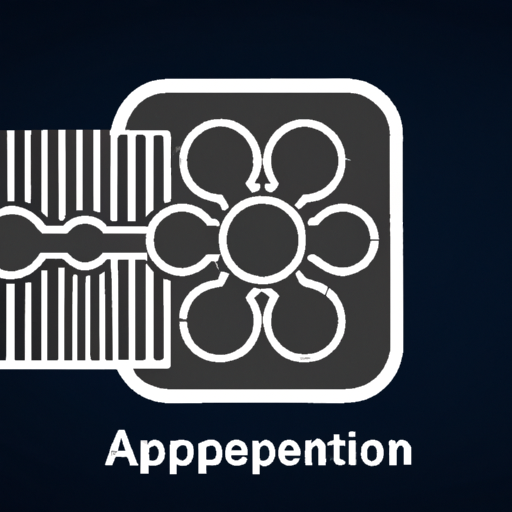
Application Development in Resonators for CFR-25JB-52-1R6: Key Technologies and Success StoriesThe development of resonators, particularly for components like the CFR-25JB-52-1R6, is a multifaceted process that integrates advanced technologies and methodologies to enhance performance, reliability, and system integration. The CFR-25JB-52-1R6 is a precision resistor often utilized in RF (radio frequency) applications, and its development is closely linked to several key technologies and notable success stories.
Key Technologies1. Material Science2. Simulation and Modeling3. Microfabrication Techniques4. Testing and Characterization5. Integration with Other Components1. Telecommunications2. Consumer Electronics3. Automotive Applications4. Medical Devices5. Internet of Things (IoT) Success Stories ConclusionThe development of resonators like the CFR-25JB-52-1R6 is a complex interplay of advanced materials, cutting-edge fabrication techniques, and rigorous testing methodologies. The successful application of these technologies across various industries underscores the significance of resonators in modern electronic systems, driving innovation and enhancing performance in telecommunications, consumer electronics, automotive, medical, and IoT applications. As technology continues to evolve, the role of resonators is expected to expand, paving the way for new applications and improved designs that will further enhance the capabilities of electronic devices.

Application Development in Programmable Oscillators for CFR-50JB-52-1M6: Key Technologies and Success StoriesProgrammable oscillators, such as the CFR-50JB-52-1M6, play a pivotal role in modern electronic systems, providing precise frequency generation tailored to specific application needs. Their adaptability makes them essential in sectors like telecommunications, consumer electronics, and industrial automation. Below, we explore key technologies that underpin these devices and highlight notable success stories that illustrate their impact.
Key Technologies1. Digital Frequency Synthesis2. Microcontroller Integration3. Low Phase Noise and Jitter4. Wide Frequency Range5. Power Efficiency6. User-Friendly Programming Interfaces1. Telecommunications2. Consumer Electronics3. Industrial Automation4. Medical Devices5. Aerospace and Defense Success Stories ConclusionThe CFR-50JB-52-1M6 and similar programmable oscillators represent a significant leap in frequency generation technology. Their versatility, precision, and programmability make them indispensable across various industries. As technology continues to advance, the integration of these oscillators into new systems will likely drive further innovations, enhancing performance and efficiency in applications ranging from telecommunications to medical devices. The ongoing evolution of programmable oscillators will undoubtedly play a crucial role in shaping the future of electronic systems.
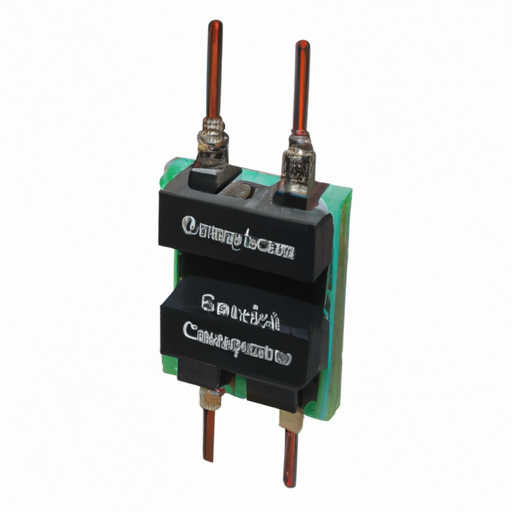
Overview of CFR-25JB-52-1K6 Switching Converter and SMPS TransformersSwitching converters and Switched-Mode Power Supply (SMPS) transformers, such as the CFR-25JB-52-1K6, are pivotal in modern power electronics. They facilitate efficient power conversion and management across various applications, making them essential in consumer electronics, industrial automation, telecommunications, renewable energy systems, and medical devices.
Core Functional Technology1. Switching Technology2. Transformer Design3. Feedback Control4. Thermal Management1. Consumer Electronics2. Industrial Automation3. Telecommunications4. Renewable Energy Systems5. Medical Devices Application Development Cases ConclusionThe CFR-25JB-52-1K6 switching converter and SMPS transformers exemplify significant advancements in power electronics technology. Their ability to deliver efficient, compact, and reliable power solutions makes them suitable for a diverse range of applications, from consumer electronics to industrial automation and renewable energy systems. By understanding the core technologies and application cases, engineers and developers can effectively leverage these components in their designs, driving innovation and efficiency in power management solutions.

Application Development in Isolation Transformers and Autotransformers: CFR-50JB-52-1K6When exploring application development in isolation transformers and autotransformers, particularly with the CFR-50JB-52-1K6 model, it is crucial to delve into the key technologies and notable success stories that demonstrate their effectiveness across various sectors.
Key Technologies1. Isolation Transformers2. Autotransformers3. Step-Up and Step-Down Transformers4. CFR-50JB-52-1K6 Specifics1. Medical Equipment2. Industrial Automation3. Renewable Energy Systems4. Data Centers Success Stories ConclusionThe application development of isolation transformers and autotransformers, particularly the CFR-50JB-52-1K6 model, underscores the critical role these technologies play across various industries. By prioritizing safety, efficiency, and reliability, organizations can harness the benefits of these transformers to enhance operational performance and achieve significant cost reductions. The success stories highlight the versatility and essential nature of transformers in modern electrical systems, showcasing their impact on safety, efficiency, and overall system reliability.
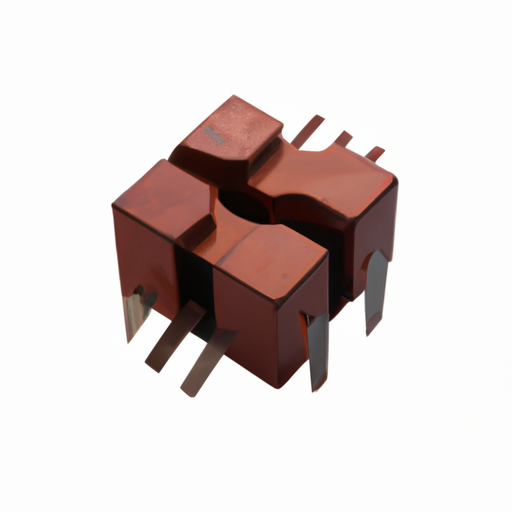
Overview of CFR-50JB-52-1R6 Pulse TransformersThe CFR-50JB-52-1R6 pulse transformer is a specialized component designed to handle high-frequency signals while providing electrical isolation. Its unique features make it suitable for a variety of applications, including pulse-width modulation (PWM), switching power supplies, telecommunications, and more. Below, we delve deeper into the core functional technologies and application development cases that highlight the effectiveness of pulse transformers like the CFR-50JB-52-1R6.
Core Functional Technologies1. High-Frequency Operation2. Electrical Isolation3. Pulse Shaping4. Compact Design5. Temperature Stability1. Switching Power Supplies2. Telecommunications3. Medical Equipment4. Industrial Automation5. Consumer Electronics6. Automotive Applications Application Development Cases ConclusionThe CFR-50JB-52-1R6 pulse transformer represents significant advancements in pulse transformer technology, offering high-frequency operation, electrical isolation, and a compact design. Its versatility allows it to be utilized across various industries, including power supplies, telecommunications, medical devices, industrial automation, consumer electronics, and automotive systems. As technology continues to advance, pulse transformers will remain crucial in enabling efficient and reliable electronic systems, paving the way for future innovations in electronics and power management.
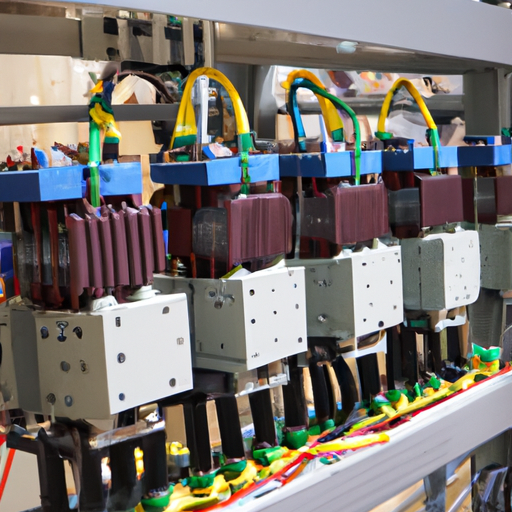
Application Development in Specialty Transformers for CFR-25JB-52-1R5: Key Technologies and Success StoriesDeveloping applications for specialty transformers, such as the CFR-25JB-52-1R5, involves leveraging advanced technologies and innovative engineering practices tailored to specific operational needs. Specialty transformers are engineered for unique applications, necessitating specialized features and capabilities. Below are key technologies and notable success stories that illustrate the advancements in this field.
Key Technologies1. Advanced Materials2. Smart Transformer Technology3. Modular Design4. Power Electronics5. Thermal Management1. Renewable Energy Integration2. Urban Infrastructure Projects3. Industrial Applications4. Data Centers5. Telecommunications Success Stories ConclusionThe development of applications for specialty transformers like the CFR-25JB-52-1R5 is propelled by advancements in materials, smart technologies, and innovative design practices. The success stories across various sectors underscore the transformative impact of these technologies, highlighting their potential to enhance efficiency, reliability, and sustainability in power distribution systems. As the demand for specialized power solutions continues to rise, ongoing research and development in this field will likely yield even more innovative applications and success stories, further solidifying the role of specialty transformers in modern electrical systems.
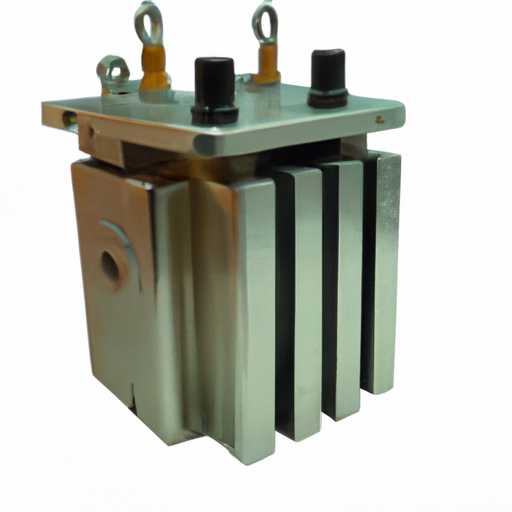
Overview of Power Transformers: CFR-25JB-52-1M5 and BeyondPower transformers, including models like the CFR-25JB-52-1M5, are critical components in electrical power systems, facilitating the transmission and distribution of electricity across various applications. While specific documentation on the CFR-25JB-52-1M5 may be limited, understanding the core technologies and application cases of power transformers provides valuable insights into their functionality and importance.
Core Functional Technologies of Power Transformers1. Magnetic Core Design2. Winding Configuration3. Cooling Systems4. Tap Changer Technology5. Protection and Monitoring Systems1. Renewable Energy Integration2. Smart Grids3. Industrial Applications4. Urban Infrastructure5. Electric Vehicle Charging Stations6. Data Centers Application Development Cases ConclusionPower transformers, including models like the CFR-25JB-52-1M5, are integral to modern electrical systems, enabling efficient power transmission and distribution. Advances in technology—such as improved materials, smart monitoring, and integration with renewable energy sources—continue to enhance their performance and application scope. As the demand for reliable and efficient power solutions grows, the development of innovative transformer technologies will remain a key focus in the energy sector, driving progress toward a more sustainable and resilient electrical infrastructure.

Application Development in Current Sense Transformers for CFR-50JB-52-1M5: Key Technologies and Success StoriesCurrent Sense Transformers (CSTs) are pivotal in a variety of applications, particularly in power electronics, energy management systems, and industrial automation. The CFR-50JB-52-1M5 model exemplifies a current sense transformer designed for precise current measurement and monitoring. Below is an overview of the key technologies and success stories associated with the application development of CSTs, particularly focusing on the CFR-50JB-52-1M5.
Key Technologies1. High Precision Measurement2. Electrical Isolation3. Miniaturization4. Digital Integration5. Temperature Stability6. Smart Grid Applications1. Electric Vehicle (EV) Development2. Renewable Energy Systems3. Industrial Automation4. Smart Home Devices5. Power Supply Units (PSUs) Success Stories ConclusionThe application development of Current Sense Transformers like the CFR-50JB-52-1M5 is propelled by technological advancements that enhance measurement accuracy, safety, and digital integration. Success stories across various industries underscore the versatility and significance of CSTs in modern electrical and electronic systems. As technology continues to evolve, the role of current sense transformers is expected to expand, driving innovations in energy management, automation, and smart technologies. The ongoing development in this field promises to enhance efficiency, safety, and sustainability in numerous applications.

Overview of CFR-25JB-52-1K5 Audio TransformersThe CFR-25JB-52-1K5 is a specialized audio transformer designed to enhance audio signal processing across a variety of applications. Audio transformers play a pivotal role in audio systems by isolating components, matching impedances, and transforming audio signals. Their versatility makes them essential in professional audio equipment, musical instruments, and consumer electronics.
Core Functional Technologies1. Impedance Matching 2. Isolation 3. Signal Transformation 4. Frequency Response 5. Low Distortion 1. Professional Audio Equipment2. Musical Instruments3. Broadcasting4. Home Audio Systems5. Public Address Systems Application Development Cases ConclusionThe CFR-25JB-52-1K5 audio transformer exemplifies the essential technologies and applications of audio transformers in modern audio systems. Its capabilities in impedance matching, isolation, signal transformation, and maintaining audio fidelity make it a valuable component across various audio applications, from professional equipment to consumer electronics. As audio technology continues to advance, high-quality audio transformers like the CFR-25JB-52-1K5 will remain integral in delivering superior sound quality and performance, ensuring that audio experiences are both immersive and enjoyable.
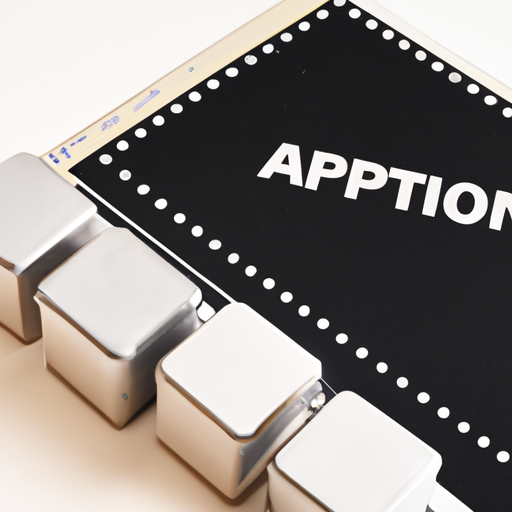
Application Development in Adjustable Power Resistors for LT1213CS8: Key Technologies and Success StoriesDeveloping applications for adjustable power resistors, particularly in conjunction with components like the LT1213CS8, involves several key technologies and methodologies. The LT1213CS8 is a precision, low-noise operational amplifier that can be used in various applications, including signal conditioning, filtering, and control systems. Below are some key technologies and success stories related to adjustable power resistors in this context.
Key Technologies1. Digital Potentiometers2. Programmable Gain Amplifiers (PGAs)3. Microcontroller Integration4. Feedback Control Systems5. Thermal Management6. Simulation and Modeling1. Audio Equipment2. Industrial Automation3. Medical Devices4. Consumer Electronics5. Automotive Applications Success Stories ConclusionThe development of applications using adjustable power resistors in conjunction with components like the LT1213CS8 exemplifies the intersection of precision electronics and innovative design. By leveraging key technologies such as digital potentiometers, microcontrollers, and feedback systems, engineers can create versatile and efficient solutions across various industries. The success stories highlight the practical benefits of these technologies, demonstrating their significant impact on performance, efficiency, and user experience. As technology continues to evolve, the potential for further advancements in this area remains promising, paving the way for even more innovative applications.
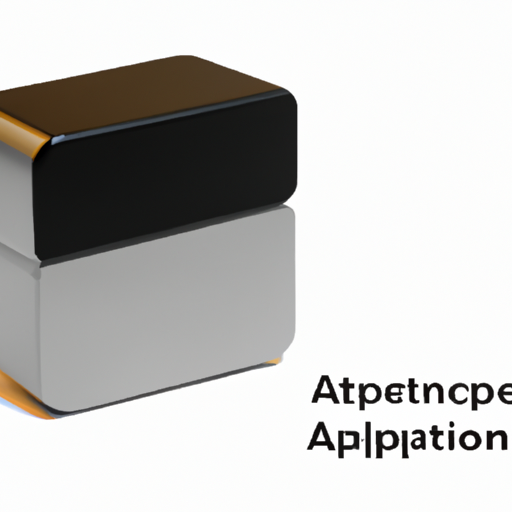
Application Development in Value Display Potentiometers for CFR-25JB-52-1M3: Key Technologies and Success StoriesValue Display Potentiometers, such as the CFR-25JB-52-1M3, are integral components in a wide array of electronic applications, particularly where precise control of voltage or current is essential. These potentiometers find utility in audio equipment, industrial controls, consumer electronics, and more. Below is an overview of key technologies and notable success stories related to the application development of these components.
Key Technologies1. Digital Potentiometers2. Analog Potentiometers3. Multi-turn Potentiometers4. Tactile Feedback5. Integration with IoT6. Robustness and Durability1. Audio Equipment2. Industrial Automation3. Consumer Electronics4. Medical Devices5. Automotive Applications Success Stories ConclusionThe application development of Value Display Potentiometers, particularly the CFR-25JB-52-1M3, underscores the significance of these components across diverse industries. With advancements in technology, such as digital integration and enhanced durability, potentiometers continue to play a vital role in improving user interfaces and device performance. Success stories across audio, industrial, consumer electronics, medical, and automotive sectors highlight their versatility and reliability, making them indispensable in modern electronic design. As technology evolves, the potential for further innovation in potentiometer applications remains vast, promising even greater enhancements in user experience and device functionality.
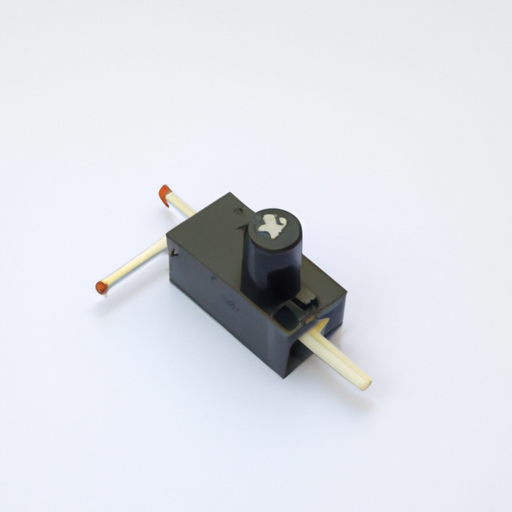
Core Functional Technology of Trimmer Potentiometers1. Adjustable Resistance: Trimmer potentiometers, such as the CFR-50JB-52-1M3, provide a variable resistance that can be manually adjusted. This feature is essential for calibrating circuits, allowing engineers to set precise values for voltage, current, and signal levels, which is critical in achieving desired performance in electronic devices.
2. Compact Design: The CFR-50JB-52-1M3 is engineered with a compact footprint, making it ideal for applications where space is limited. This small size allows for seamless integration into various electronic devices, from consumer electronics to industrial equipment. 3. Durability and Reliability: Built to endure environmental challenges, trimmer potentiometers are designed for longevity. The CFR series is particularly noted for its robust construction, ensuring reliable performance even in demanding conditions, such as extreme temperatures and humidity.
4. Taper Options: Trimmer potentiometers are available in different taper options, including linear and logarithmic. This flexibility allows designers to select the most appropriate type for their specific application, enhancing the overall functionality of the circuit.
5. Multi-turn Adjustment: Many models, including the CFR-50JB-52-1M3, feature multi-turn adjustments, which enable precise tuning over a broader range. This capability is especially beneficial in applications that require meticulous adjustments, such as calibration and fine-tuning.
Application Development Cases1. Audio Equipment Calibration: Trimmer potentiometers are commonly used in audio devices to adjust gain and tone settings. For example, in a high-fidelity audio amplifier, the CFR-50JB-52-1M3 can be utilized to fine-tune output levels, ensuring optimal sound quality and user satisfaction.
2. Sensor Calibration: In sensor applications, such as temperature or pressure sensors, trimmer potentiometers allow engineers to calibrate the sensor output to match desired specifications. By adjusting the resistance, the accuracy and performance of the sensor can be significantly improved.
3. Power Supply Regulation: Trimmer potentiometers are instrumental in power supply circuits for setting output voltage levels. In a DC-DC converter, for instance, the CFR-50JB-52-1M3 can be adjusted to achieve the required output voltage, providing flexibility and adaptability in circuit design.
4. LED Brightness Control: In lighting applications, trimmer potentiometers can be employed to control the brightness of LEDs. By adjusting the resistance, users can achieve the desired light intensity, making them suitable for both decorative and functional lighting solutions.
5. Test Equipment Calibration: In laboratory settings, trimmer potentiometers are frequently used to calibrate measurement devices. For example, in oscilloscopes, they can be used to adjust the time base or voltage scale, ensuring accurate readings and reliable performance in testing scenarios.
6. Consumer Electronics: Trimmer potentiometers are integral to various consumer electronics, such as televisions and radios, where they are used for tuning and volume control. The CFR-50JB-52-1M3 can be seamlessly integrated into these devices, providing users with an intuitive way to adjust settings.
ConclusionTrimmer potentiometers like the CFR-50JB-52-1M3 are vital components in modern electronics, offering adjustable resistance for calibration and fine-tuning across a diverse range of applications. Their compact design, durability, and versatility make them effective in audio equipment, sensor calibration, power supply regulation, and more. As technology continues to advance, the need for precise and reliable tuning solutions will ensure that trimmer potentiometers remain essential in electronic design and development. Their ability to enhance performance and user experience will keep them at the forefront of electronic component technology.

Application Development in Slide Potentiometers for CFR-25JB-52-1K3: Key Technologies and Success StoriesSlide potentiometers, such as the CFR-25JB-52-1K3, are essential components in a wide range of electronic applications due to their ability to provide variable resistance and control. This overview highlights the key technologies that underpin their functionality and showcases notable success stories that illustrate their impact across various industries.
Key Technologies1. Resistive Sensing Technology2. Analog Signal Processing3. Digital Integration4. User Interface Design5. Durability and Reliability6. Wireless Communication1. Audio Equipment2. Consumer Electronics3. Industrial Automation4. Musical Instruments5. Automotive Applications Success Stories ConclusionThe CFR-25JB-52-1K3 slide potentiometer exemplifies the versatility and effectiveness of slide potentiometers across various applications. By leveraging key technologies such as resistive sensing, digital integration, and user interface design, developers have successfully implemented these components in numerous industries, enhancing functionality and user experience. As technology continues to evolve, the role of slide potentiometers in application development is likely to expand, particularly in automation, consumer electronics, and smart devices, paving the way for innovative solutions and improved user interactions.

Overview of Thumbwheel Potentiometers: CFR-50JB-52-1K3Thumbwheel potentiometers, such as the CFR-50JB-52-1K3 model, are essential components in electronic devices, providing a user-friendly interface for adjusting resistance and controlling voltage levels. Their compact design and reliable performance make them suitable for a variety of applications across different industries.
Core Functional Technology1. Basic Operation2. Construction3. Electrical Characteristics4. Durability and Reliability1. Consumer Electronics2. Industrial Equipment3. Medical Devices4. Automotive Applications5. Telecommunications Application Development Cases ConclusionThumbwheel potentiometers, exemplified by the CFR-50JB-52-1K3 model, are vital components across numerous applications due to their ease of use, reliability, and versatility. Their ability to provide precise control makes them indispensable in consumer electronics, industrial equipment, medical devices, automotive applications, and telecommunications. As technology advances, the demand for these components is expected to grow, driving further innovations in their design and application.

Core Functional Technology Articles on MM74HC373N Arrays and Signal Transformers 1. **Understanding the MM74HC373N: A High-Speed Latch**
- **Overview**: The MM74HC373N is an octal transparent latch designed for high-speed digital applications. It is part of the 74HC family, known for its high-speed performance and low power consumption.
- **Key Features**:
- **8-bit Data Storage**: Capable of storing 8 bits of data, making it suitable for various applications requiring temporary data holding.
- **Transparent Operation**: When the latch enable (LE) is high, data is continuously passed through, allowing for real-time data processing.
- **Low Power Consumption**: Operates efficiently, making it ideal for battery-powered devices.
- **High-Speed Operation**: Capable of functioning at speeds up to 25 MHz, suitable for fast data processing applications.
- **Applications**: Commonly used in data storage, temporary data holding, and interfacing between different logic levels in digital circuits. 2. **Signal Transformers: Bridging the Gap in Communication**
- **Overview**: Signal transformers are critical components in communication systems, providing essential functions such as isolation, impedance matching, and preservation of signal integrity.
- **Key Features**:
- **Isolation**: Prevents ground loops and protects sensitive components from voltage spikes.
- **Impedance Matching**: Ensures maximum power transfer between circuits, enhancing overall system efficiency.
- **Signal Integrity**: Maintains the quality of signals over long distances, crucial for reliable communication.
- **Applications**: Widely used in telecommunication systems, audio equipment, and data transmission networks. Application Development Cases 1. **Data Acquisition Systems Using MM74HC373N**
- **Case Study**: A data acquisition system was developed for environmental monitoring, utilizing the MM74HC373N to latch sensor data.
- **Implementation**:
- Sensors output data to the MM74HC373N, which latches the data when the LE signal is activated.
- The latched data is then processed by a microcontroller for further analysis.
- **Outcome**: The system demonstrated improved data reliability and reduced noise interference, leading to more accurate environmental readings. 2. **Audio Signal Isolation with Signal Transformers**
- **Case Study**: An audio processing system required isolation to prevent hum and noise from ground loops.
- **Implementation**:
- Signal transformers were integrated into the audio path to isolate the input and output stages.
- This setup ensured that any noise from the power supply or other components did not affect the audio quality.
- **Outcome**: The integration of signal transformers enhanced audio clarity and reduced interference, resulting in a high-fidelity audio experience. 3. **Digital Communication Systems with MM74HC373N**
- **Case Study**: A digital communication system was designed to transmit data over long distances.
- **Implementation**:
- The MM74HC373N was used to buffer and latch data before transmission, ensuring that the data remained stable during the transfer.
- Signal transformers were employed at the transmission and reception ends to maintain signal integrity.
- **Outcome**: The project achieved successful long-distance data transmission with minimal signal degradation, demonstrating the effectiveness of combining MM74HC373N and signal transformers. Conclusion
The MM74HC373N and signal transformers are integral components in modern electronic applications. By leveraging their unique features, engineers can develop robust systems that ensure data integrity, reduce noise, and enhance overall performance. Whether in data acquisition, audio processing, or digital communication, these components are essential for achieving high-quality results across various applications. Their versatility and reliability make them indispensable in the design of advanced electronic systems.

Application Development in Adjustable Inductors for CFR-25JB-52-1R2: Key Technologies and Success StoriesAdjustable inductors, such as the CFR-25JB-52-1R2, are integral components in a variety of electronic applications, particularly in RF (radio frequency) circuits, power electronics, and signal processing. The development of applications utilizing adjustable inductors involves several key technologies and methodologies. Below are insights into these technologies and notable success stories.
Key Technologies1. Magnetic Core Materials2. Winding Techniques3. Mechanical Adjustability4. Simulation and Modeling5. Integration with Digital Control6. Miniaturization1. RF Applications2. Power Electronics3. Automotive Electronics4. Consumer Electronics5. Telecommunications Success Stories ConclusionThe development of applications using adjustable inductors like the CFR-25JB-52-1R2 is driven by advancements in materials, design techniques, and integration with digital technologies. Success stories across various industries underscore the versatility and importance of adjustable inductors in enhancing performance, efficiency, and user experience in electronic devices. As technology continues to evolve, the role of adjustable inductors is likely to expand, paving the way for new innovations and applications that will further enhance electronic systems.